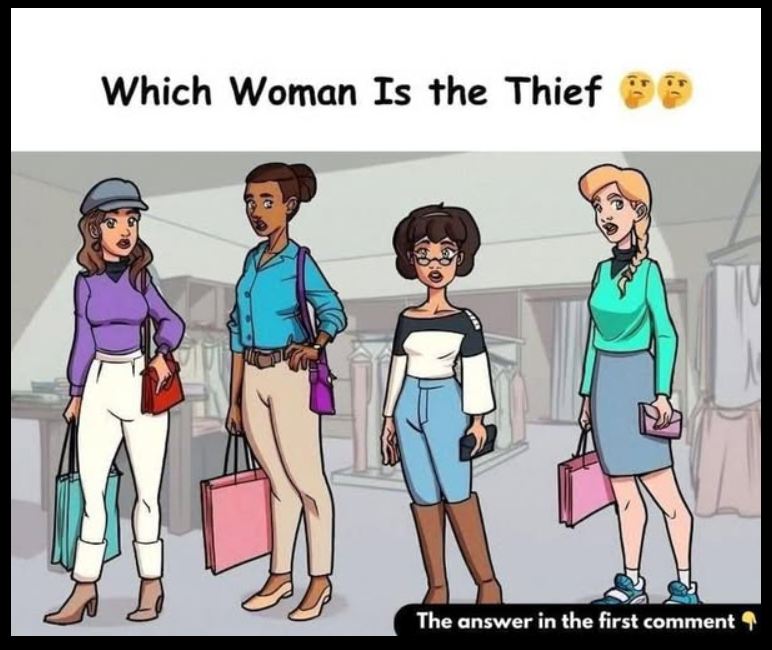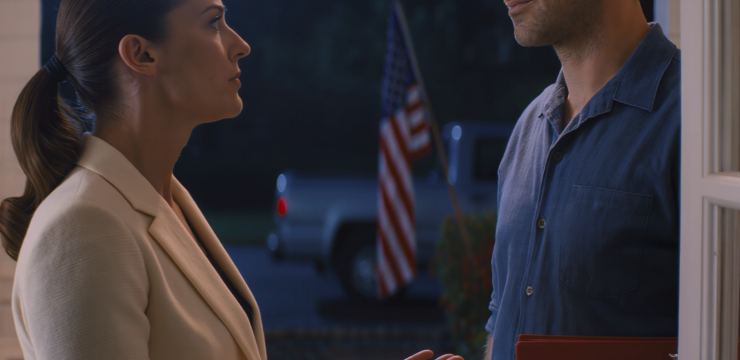Have you ever come across one of those puzzles that looks incredibly easy at first, but the more you look at it, the trickier it becomes? “Which Woman Is the Thief?” is exactly that kind of brain-teaser. It’s designed to test your logic, observation skills, and your ability to look beyond the obvious. At first glance, you see four women standing side by side, and the question is simple—one of them is a thief. Your job is to figure out which one.

While it might be tempting to judge based on their facial expressions, the way they’re dressed, or how suspicious they look, those are actually distractions. What really sets this puzzle apart is how it forces you to notice what most people usually overlook—tiny details that can easily go unnoticed unless you’re truly paying attention. In this case, the clue to solving the mystery doesn’t lie in their faces or their posture. It lies at their feet. That’s right—the answer is in their shoes. Most people, when looking at the image, immediately start analyzing the women’s expressions. One might appear nervous, another might look too calm, while another might be fidgeting or looking away. And sure, in real life, we might rely on body language to figure out if someone is hiding something.
But this puzzle has a clever twist—it challenges you to look past human instincts and focus on pure logic. Let’s break down the image a bit more. You’ve got four women. They each look different, have different outfits, and all seem to be minding their own business. But if you direct your attention downward, you’ll notice something odd about one of them. Three of the women are wearing shoes that match—both on the left and right foot. But one of the women is wearing mismatched shoes. That might not seem like a big deal at first, but in the context of a theft, it’s a huge clue. Think about it: why would someone be wearing two completely different shoes? One possible explanation is that in the act of stealing something, they had to leave in a hurry.
Maybe they were interrupted and had to flee the scene so quickly they didn’t have time to grab the matching shoe. Or perhaps, in the chaos, they accidentally put on one of the victim’s shoes. That detail—the mismatched footwear—is the one thing that sets the thief apart. It’s a small, almost hidden element, but it’s exactly what gives the thief away. That’s why puzzles like this are so clever. They don’t reward you for guessing or going with your gut instinct.
They reward you for taking a closer look, noticing the things that don’t quite add up, and piecing together the logic that ties it all together. The mismatched shoes serve as undeniable evidence. It’s not about who looks nervous, who has shifty eyes, or who’s dressed in a suspicious way. It’s about the one detail that breaks the pattern. And that’s the beauty of this puzzle. It flips your expectations and forces you to reconsider how you analyze a situation. In a world full of distractions, it reminds us how important it is to focus, observe, and question what we see. So the next time you face a challenge like this—whether it’s a brain teaser or a real-life dilemma—remember that the answer might not always be where you think it is. It could be hiding in the smallest details, like an odd pair of shoes, just waiting for someone curious enough to notice. And if you’re that person, congratulations—you’ve just cracked the case wide open.





